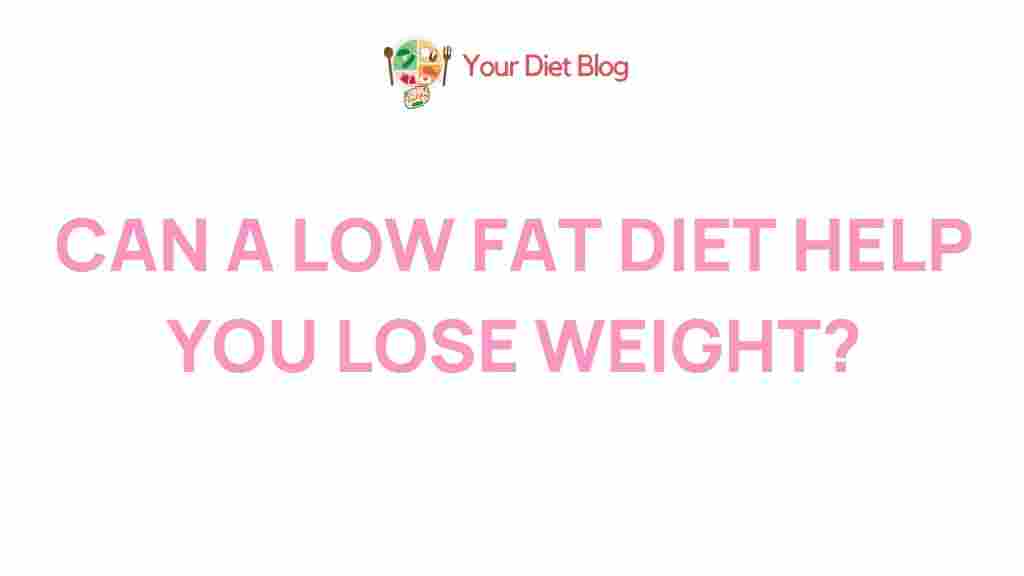What Is a Low-Fat Diet?
A low-fat diet is a nutritional approach that minimizes the consumption of dietary fat, particularly saturated fats, while focusing on healthy alternatives. This dietary choice has gained significant attention for its potential to promote better health and prevent chronic illnesses.
Whether you’re looking to improve your heart health, lose weight, or maintain overall well-being, adopting a low-fat diet can be a game-changer. In this article, we’ll explore the surprising benefits of a low-fat diet, practical implementation strategies, and tips for troubleshooting common challenges.
The Benefits of a Low Fat Diet
Embracing a low-fat diet offers numerous advantages that extend beyond mere weight loss. Here’s what makes this dietary choice a compelling option for many:
1. Improves Heart Health
One of the most celebrated benefits of a low-fat diet is its positive impact on heart health. By reducing saturated fats found in processed foods and red meats, you can lower your LDL (bad cholesterol) levels and reduce the risk of cardiovascular diseases.
2. Aids in Weight Management
A low-fat diet is often synonymous with weight loss due to its reduced calorie content. Consuming fewer fats can help you manage your calorie intake more effectively, making it easier to shed those extra pounds.
3. Enhances Digestive Health
High-fat diets can sometimes lead to digestive issues, such as bloating or discomfort. A low-fat diet, rich in fiber and lean proteins, supports better digestion and promotes a healthier gut.
4. Lowers the Risk of Certain Diseases
Research indicates that a low-fat diet may lower the risk of developing conditions like type 2 diabetes, hypertension, and certain types of cancer. Its emphasis on nutrient-dense foods ensures a balanced intake of vitamins and minerals essential for overall health.
5. Boosts Energy Levels
By incorporating whole grains, fruits, and vegetables into your diet, you supply your body with complex carbohydrates and essential nutrients that provide sustained energy throughout the day.
How to Start a Low Fat Diet
Transitioning to a low-fat diet doesn’t have to be overwhelming. Follow these simple steps to get started:
Step 1: Understand Your Nutritional Needs
Before starting, calculate your daily caloric and fat intake requirements. Consulting a nutritionist can provide personalized guidance.
Step 2: Replace Unhealthy Fats
Swap unhealthy fats with healthier options:
- Use olive oil instead of butter for cooking.
- Replace full-fat dairy products with low-fat or skim versions.
- Choose lean protein sources like chicken, fish, or plant-based proteins.
Step 3: Focus on Whole Foods
Incorporate more whole grains, fruits, and vegetables into your diet. These foods are naturally low in fat and high in essential nutrients.
Step 4: Read Nutrition Labels
When shopping, pay attention to nutrition labels to identify products low in saturated fats and free from trans fats.
Step 5: Plan Your Meals
Meal prepping can help you stay on track. Prepare balanced meals ahead of time to avoid the temptation of unhealthy options.
Common Challenges and Troubleshooting Tips
Adopting a low-fat diet can come with challenges, but these tips can help you stay on course:
Challenge 1: Feeling Hungry
Solution: Focus on high-fiber foods like vegetables, legumes, and whole grains to keep you full longer.
Challenge 2: Lack of Flavor
Solution: Experiment with herbs, spices, and low-fat sauces to add flavor without increasing fat content.
Challenge 3: Eating Out
Solution: Choose grilled, baked, or steamed dishes when dining out. Avoid fried or creamy items, and request dressings on the side.
Challenge 4: Cravings for High-Fat Foods
Solution: Satisfy cravings with healthier options. For example, try air-popped popcorn instead of chips or a small portion of dark chocolate instead of dessert.
Delicious Low-Fat Meal Ideas
To make your journey easier, here are some tasty low-fat meal ideas to try:
- Breakfast: Oatmeal topped with fresh berries and a drizzle of honey.
- Lunch: Grilled chicken salad with a lemon vinaigrette dressing.
- Dinner: Baked salmon with steamed broccoli and quinoa.
- Snack: Sliced apples with a sprinkle of cinnamon.
Additional Resources
For more tips on adopting a healthy lifestyle, explore our comprehensive guide to balanced eating. For detailed studies on the benefits of low-fat diets, check out this external resource.
Conclusion
A low-fat diet offers numerous surprising benefits, from improved heart health and weight management to better energy levels and reduced risk of chronic diseases. By focusing on whole foods, making smart substitutions, and overcoming common challenges, you can unlock the full potential of this dietary approach.
Ready to take the first step? Begin your low-fat diet journey today and enjoy the lasting health benefits!
This article is in the category Weight Management and created by YourDiet Team
